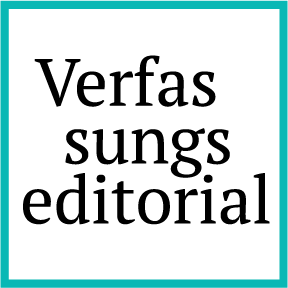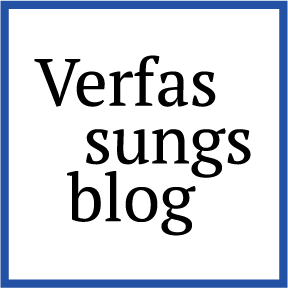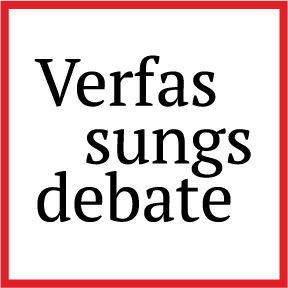Meat-Free Nudging
In the last decades, we have learned a great deal about how human beings think and act. We now know far more about our species than we ever did. What we have learned tells us what we might do to change current behavior. In particular, we know a lot about what we might do to nudge meat-free eating. Let’s start with people, and then turn to behavior change.
People and Bounded Rationality
Human beings depart from perfect rationality in predictable ways. First, we tend to show “present bias”. Today and tomorrow much matter, but the future is a foreign country – call it Laterland – and we are not sure that we are ever going to visit. Present bias helps explain why people do not save for retirement and do not do enough to protect their long-term health. It also helps explain climate change.
Second, people tend to show “optimistic bias.” Most people think that they are better drivers than the average driver, and more generally, that they are less likely to fall prey to serious risks than the average person. When we receive new information, we are especially likely to believe it if it is good news (“nothing bad is going to happen”). We are more skeptical if it is bad news (“the next year is likely to be terrible”). Our skeptical reaction to bad news can fuel optimistic bias.
Third, people suffer from inertia. Habits can be intractable. In general, we do not love change. Inertia helps account for “status quo bias,” which means that current practices have a kind of magnet attached to them. We tend not to change our behavior even when change is good to do, or right to do.
Fourth, people dislike losses – a lot. By itself, that is not so surprising. The surprise is that people dislike losses much more than they like equivalent gains. If you are like most people, a loss of a specified amount will make you far sadder than a gain of the same amount. A change that comes with both benefits and costs might not be so appealing, because the costs loom larger than the benefits.
Fifth, people have limited attention. When we go about our lives, we pay attention to a subset of the things that are relevant to us, and we ignore many others. That is one reason that hidden fees can be highly profitable. It is one reason that people often make economic decisions that are not exactly rational, and also that we make decisions that might not be so easy for us to defend on moral grounds.
Nudges: Educative and Architectural
Alert to these findings, policymakers all over the world, and many of those who advise them, have explored the use of “nudges”: interventions that preserve freedom of choice but that counteract our imperfect rationality to steer our choices in better directions. For example, a GPS device is a nudge. It overcomes an absence of information, of course. But it also counteracts, at once, optimistic bias and limited attention, and it helps us to get where we want to go.
Many nudges, like a GPS device, are educative. They give us information, and they help us to choose with the benefit of it. A label is an educative nudge, and so is a warning, and so is a reminder. Some educative nudges help us to pay attention to something that we would otherwise ignore, such as high calories or high levels of salt, or to ingredients to which we might be allergic. Some educative nudges overcome present bias (by making the future salient) or optimistic bias (by making bad or unwelcome news salient and credible).
Other nudges are architectural. They change the background against which we make choices. For example, people might be automatically enrolled in a savings plan, and also have the right to opt out. Or people might be prompted to make a choice, as when they are asked, in applying for a driver’s license, whether they want to be an organ donor. Or a supermarket might be designed so that the most healthy choices are the most visible, prominent, and displayed at the checkout counteract, while less healthy choices are less visible and a bit harder to find. In these ways, architectural nudges can be designed to overcome present bias and loss aversion.
Nudges are not mandates, bans, taxes, or subsidies. They do not impose monetary incentives. Much of the time, they nonetheless have a significant effect. In some cases, they have a much greater effect than people expect. They might even have a larger impact than economic incentives.
Meat and Meatlessness
Turn in this light to meat consumption. People who show present bias are unlikely to attend to the long-term effects of eating meat (consider climate change). People who suffer from limited attention are unlikely to focus on the abuse of animals raised for food. The same is true for people who are optimistically biased. If people tend to show inertia, large-scale changes in diet should be expected to face serious resistance. If people are especially averse to losses, then a shift away from meat might not be so welcome; people will be inclined to focus on the relevant losses, in terms of enjoyment and otherwise, associated with that shift. In these circumstances, those who seek to promote meat-free alternatives have to face some serious challenges.
The good news is that decades of research have produced a general idea and simple framework for producing behavioral change in the face of the relevant challenges. The general idea is straightforward: choice architecture. All choices are made against the background of such an architecture, which influences what people do – and eat. That architecture might encourage meat-eating, or it might discourage it. The features of relevant choice architecture are often taken for granted and even seem invisible.
For better or for worse, the framework is an acronym: FEAST. F stands for Fun; E is for Easy; A is for Attractive; S is for Social; and T is for Timely. Each of the five words has a great deal of research behind it, and for present purposes, it will be useful to focus on the three most central ideas: E, S, and F.
Some of the most successful nudges operate simply by making certain choices easy (the E). An opt-out default, or automatic enrollment, is the clearest example. When people are automatically enrolled in a certain plan or outcome, they need not do anything at all. Simplification is not automaticity, but it can also have a large impact – as, for example, where access to certain products takes little time and effort. Of course, social influences matter (the S). If people learn that most people are making certain choices, they are more likely to make those choices too; knowledge of what the majority is doing can accelerate a tendency. And if people learn that people are increasingly making certain choices, that knowledge can accelerate a trend, even if the majority is not yet making those choices. Information about an emerging norm can be highly effective in spurring behavior change.
Some nudges are a bit scary or even punitive. If people are nudged to avoid risky behavior, they might be frightened. If people are nudged to make healthier choices, they might feel ashamed. But other nudges produce a smile or a nod rather than a frown or a form of cowering. If, for example, people learn that certain choices are really fun (the F), or that certain options will be delightful (the F once more), the emotional impact of the nudges will be positive rather than negative. Nudges that produce a sense of fun increase well-being for that reason, and they might also be more effective for that reason.
Nudging Meat-free Choices
There is much to do, and to learn, about nudging meat-free choices, and I offer only a preliminary sketch, or promissory note, here. Consider the “E” in the FEAST framework, which deserves pride of place. A simple example, with apparently increasing popularity, is “plant-based by default.” For one example, consider a small-scale study of the use of vegetarian defaults in Denmark. The study involved three field experiments, with a total of over 300 respondents. Each of the experiments involved real lunch choices for online registrants. Participants were randomly allocated to two groups. In one of them, they were told that “a non-vegetarian buffet will be served for lunch”, and they were asked to state if they “would like a vegetarian dish prepared for you” (standard default). In the other group, they were told that “a vegetarian buffet will be served for lunch,” and asked to state if they “would like to have a non-vegetarian dish prepared for you” (vegetarian default).
The differences in outcomes between the two default groups were very large. In the first of the three experiments, the vegetarian choice increased from 2% to 87%, with the vegetarian default; in the second, the corresponding shift was from 6% to 86%; in the third, it was from 12.5% to 89%.
In many places, private and public institutions are increasingly employing vegetarian defaults to motivate diners to choose plant-based offerings – at least for a few meals per week. There is an analogy here to the idea of “green by default,” which is intended to enroll people automatically in green energy sources, while allowing them to shift to coal if they like. In Switzerland and Germany, “green by default” has had large and beneficial effects. We could easily imagine ambitious efforts to make meat-free choices the default ones.
The non-profit initiative “Defaultveg” offers a wide range of resources and suggestions on how to introduce such defaults, for example, for cities and universities. Amsterdam has taken strong steps in this direction. New York City offers its school children “Meatless Mondays”. New York City has made its eleven public hospitals now plant-based by default. NYC Hospitals + Health is the largest public healthcare system in the United States, serving three million meals a year, which means that its default rule – plant-based – is likely to be having a large effect. Or consider greenerbydefault.com, which is designed to make plant-based food the default, and which is being used by many institutions, including Vancouver Coastal Health, Columbia University, and Harvard University.
With respect to other nudges, we can foresee a great deal of creative thinking, adapting existing or coming reforms to this domain. It is easy to imagine labels of various kinds, designed either to promote meat-free options or to discourage meat consumption. A negative label might consist of a warning of some kind; it would, of course, face serious political challenges. A positive label might seek to use the “F” in the FEAST framework to encourage positive affect. We might foresee creative design of websites and supermarkets or new uses of social norms. For example, meatless offerings could be given a prominent place.
The most important point is the broadest: Every activity is undertaken pursuant to a choice architecture, which is likely to have major effects on what people choose and do. Changes in the underlying architecture can make all the difference. Private institutions can do, and are doing, a great deal to alter that architecture to promote meatless choices. We can also foresee nudging by governments, akin to what we are now seeing in many domains that involve safety, health, and the environment.




Great article Cass! Important topic and something we’re spending time on too here in South Africa from a language POV. Liked your point on loss aversion – from a linguistic perspective the lack of meat (meat-less or meat-free) makes people more aware of what they’re losing out on but plant-based isn’t hitting the spot either.
Thank you so so much and hi!